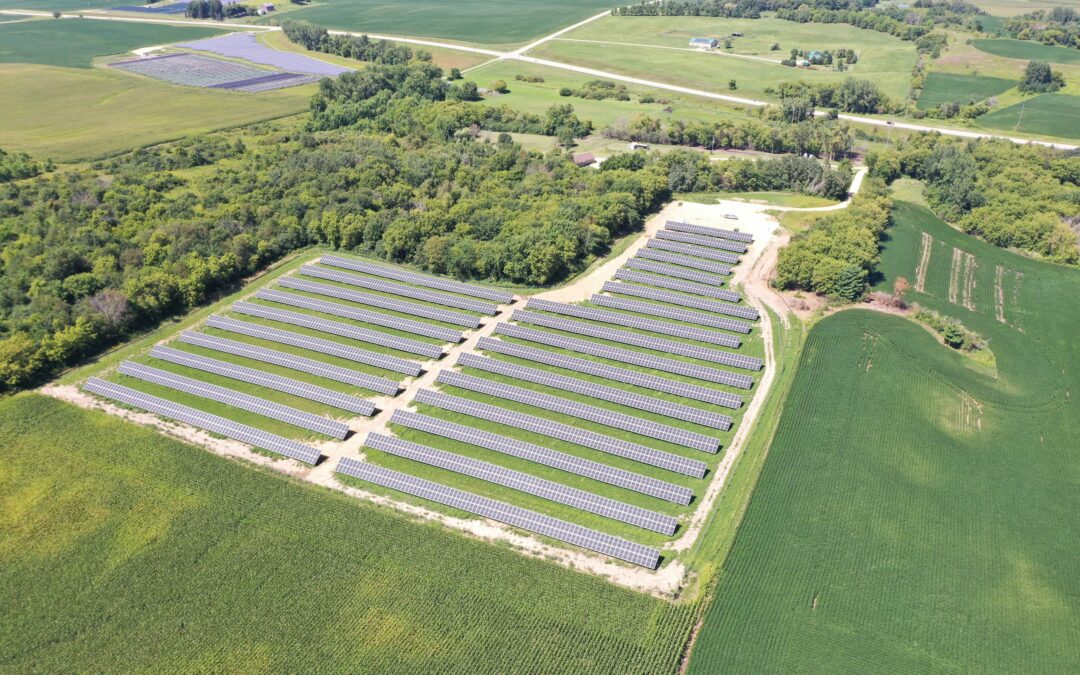This blog post is Cedar Creek Energy’s commentary on the AgWeek article, which you can read here.
Solar energy has become an increasingly viable option for farmers and rural businesses, thanks to falling costs and supportive financial programs. Rick Tisdale, a senior project development engineer at Cedar Creek Energy, shared insights on navigating solar installations at Minnesota Farmfest.

Cedar Creek Energy, a Minnesota-based solar company, has grown exponentially over the past 17 years. Starting with just six employees, the company now employs over 100, largely due to the declining costs of solar technology and the increasing interest from farmers and rural businesses. Tisdale, who has been with the company for 15 years, explained that when solar technology was still expensive, Cedar Creek Energy focused on energy efficiency to help businesses reduce costs. However, as solar prices dropped, the company shifted its focus to solar installations.
The Role of Farmers in Driving Solar Adoption
Farmers have played a pivotal role in the adoption of solar energy. Tisdale noted that farmers were early adopters of solar technology, which helped drive down costs for everyone. Their commitment to sustainability and cost-efficiency has made solar an increasingly popular option in the agricultural sector.
Key Considerations for Solar Installation
Choosing a solar provider is a significant decision, akin to picking a long-term partner. Unlike a vehicle that can be easily replaced, a solar system comes with a 30-year warranty, making it a decision that will last a very long time. He advises potential solar customers to consult multiple companies before making a decision.
When considering solar installations, look into several key areas:
- Tax Incentives: Up to 30% of the installation cost can be deducted from a property owner’s tax liability. Additionally, state and federal depreciation can cover up to 70% of the project’s cost, making solar a financially attractive option. However, understanding the tax code is crucial to fully benefit from these incentives.
- PACE Financing: The Property Assessed Clean Energy (PACE) program offers a unique financing option for energy efficiency and renewable energy projects, including solar. Available in 32 states, PACE allows property owners to finance solar installations without personal guarantees or affecting their credit reports. Tisdale highlights that over $5 billion in projects have been completed through PACE in the U.S., making it a “cool program” with significant potential for farmers and rural businesses.
- REAP Grants: The Rural Energy for America Program (REAP), managed by the U.S. Department of Agriculture, provides grants and loans to help farmers and rural small business owners invest in renewable energy technologies. Tisdale mentioned that Cedar Creek Energy has successfully secured substantial REAP grants for its clients, further reducing the financial burden of solar installations.
The Path Forward
Solar energy represents a sustainable and cost-effective option for farmers and rural businesses. By taking advantage of tax incentives, PACE financing, and REAP grants, these entities can significantly reduce the cost of solar installations while contributing to a greener future. A well-considered investment in solar energy can provide long-term financial and environmental benefits, making it a smart choice for those in the agricultural sector.

